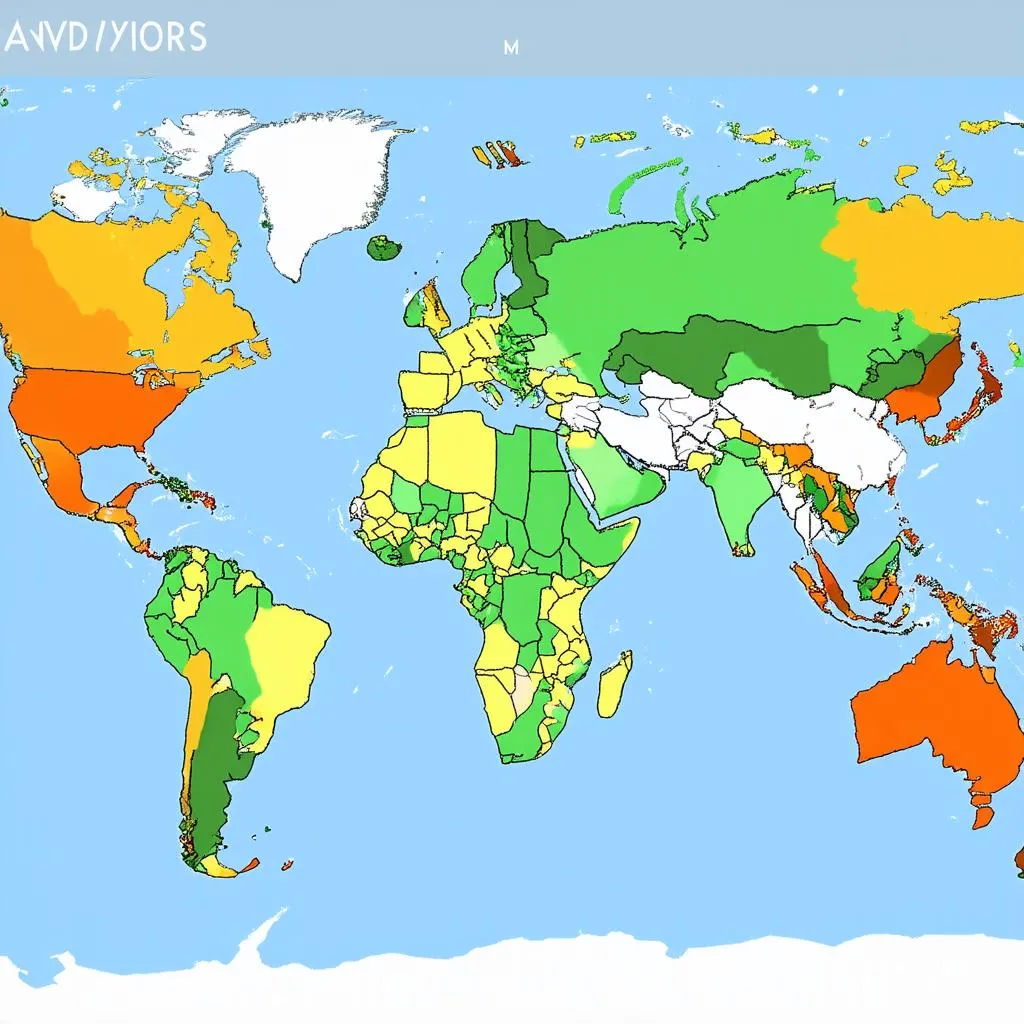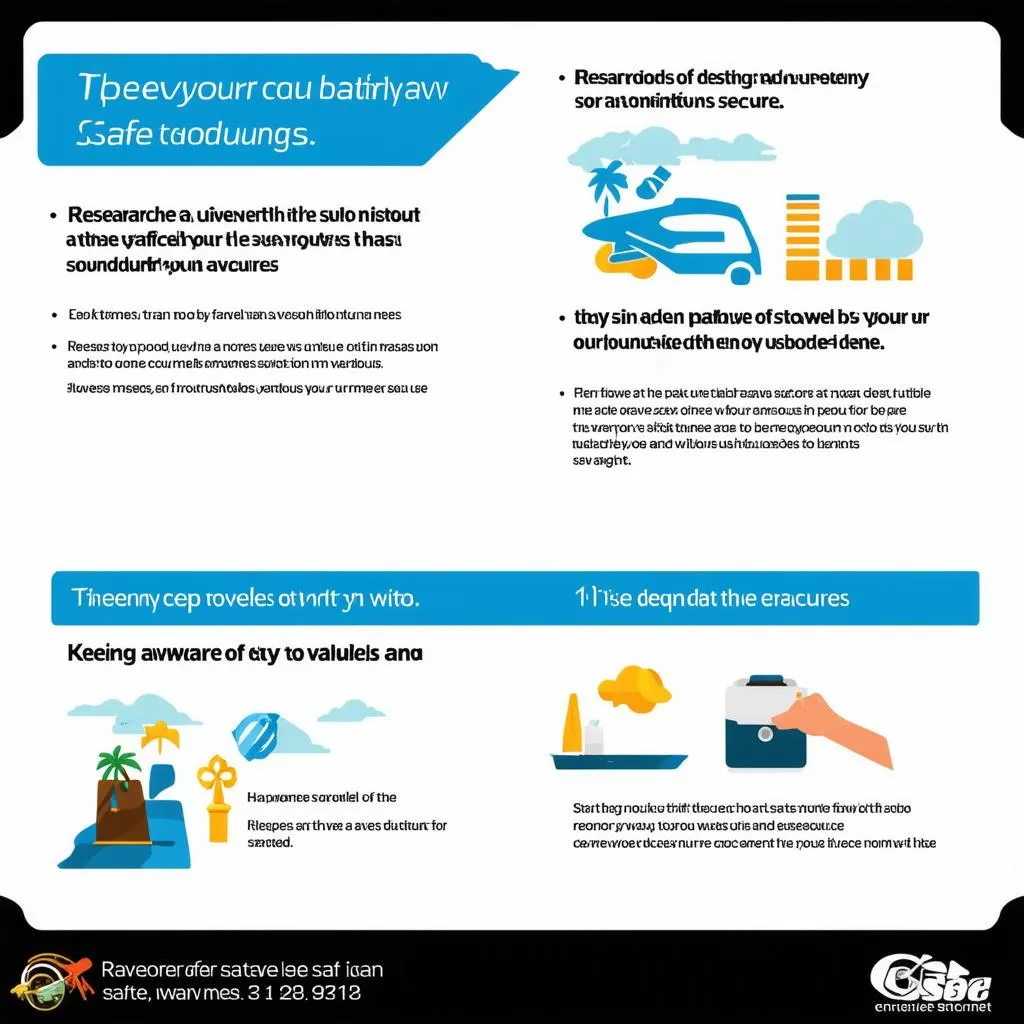Have you ever been planning a trip, daydreaming about exotic food and breathtaking scenery, only to stumble upon a “State Department travel warning” for your dream destination? It can be a real buzzkill, leaving you with more questions than answers. Should you cancel your trip? Are you putting yourself in danger?
Don’t hit the panic button just yet! Let’s unpack what these warnings really mean and how you can use them to make informed travel decisions.
Understanding State Department Travel Warnings
The U.S. Department of State issues travel advisories for virtually every country in the world. These advisories are not meant to dictate your travel plans, but rather provide you with objective information about safety and security conditions so you can make responsible choices.
What do the warnings mean?
The State Department uses a four-level system to categorize safety and security risks:
- Level 1 – Exercise Normal Precautions: This is the lowest level, indicating that you should exercise the same caution you would in any unfamiliar environment.
- Level 2 – Exercise Increased Caution: This level suggests that crime, terrorism, civil unrest, or other risks are elevated. Be aware of your surroundings and take extra precautions to protect yourself.
- Level 3 – Reconsider Travel: This level indicates serious risks to your safety and security. The State Department advises against non-essential travel to these destinations.
- Level 4 – Do Not Travel: This is the highest level, indicating a life-threatening situation. The State Department strongly advises against all travel to these locations.
What are some common reasons for travel warnings?
Travel warnings can be issued for a wide range of reasons, including:
- Crime: High rates of violent crime, theft, or scams can trigger a warning.
- Terrorism: A history of terrorist attacks or a credible threat of future attacks may lead to a warning.
- Civil Unrest: Protests, riots, or armed conflict can create dangerous situations for travelers.
- Natural Disasters: Countries prone to earthquakes, hurricanes, or other disasters may be subject to warnings.
- Health Risks: Outbreaks of infectious diseases or inadequate healthcare infrastructure can also lead to warnings.
How to Use Travel Warnings to Plan Your Trip
Instead of seeing a travel warning as a roadblock, think of it as a valuable tool for planning a safe and enjoyable trip. Here’s how:
- Check the Specific Advisory: Don’t just rely on the level; delve into the advisory itself. It will provide detailed information on specific risks, affected areas, and precautions you can take. For instance, a Level 2 advisory for a country might only highlight risks in specific regions, leaving other areas safe for travel.
- Consider Your Risk Tolerance: Everyone has a different level of comfort with risk. What one person considers an adventure, another might find daunting. Be honest with yourself about your own risk tolerance when making decisions.
- Stay Informed: Conditions can change rapidly, so stay updated on the latest advisories leading up to and even during your trip. You can enroll in the State Department’s Smart Traveler Enrollment Program (STEP) for alerts and easy contact with the nearest U.S. embassy or consulate.
- Take Precautions: No matter where you travel, taking common-sense precautions can significantly reduce your risk. Be aware of your surroundings, avoid flashing expensive belongings, and let trusted contacts know your itinerary.
What about Travel Insurance?
Travel insurance becomes even more crucial when traveling to a destination with a travel warning. Check if your policy covers events related to the specific warning.
For example, most standard travel insurance policies won’t cover cancellations due to fear or anxiety caused by a travel warning (unless the warning level changes to Level 4 after you’ve booked). However, some policies offer “Cancel for Any Reason” (CFAR) coverage, which allows you to cancel for any reason, including pre-existing travel warnings.
Frequently Asked Questions
Can I still travel to a country under a Level 3 or 4 warning?
The State Department strongly advises against it. In most cases, there will be limited or no consular services available to assist you if you encounter difficulties.
Are State Department travel warnings always accurate?
The State Department makes every effort to provide accurate and up-to-date information, but situations can change quickly. It’s always a good idea to consult multiple sources and exercise your own judgment.
Do other countries have similar travel advisory systems?
Yes, many countries have their own travel advisory systems, such as the UK Foreign, Commonwealth & Development Office and the Canadian Government’s Travel Advice and Advisories.
Planning your next adventure?
Don’t let State Department travel warnings deter you from exploring the world. By staying informed, assessing the risks, and taking necessary precautions, you can have a safe and memorable journey.
For more travel tips and resources, be sure to check out other informative articles on travelcar.edu.vn. You can find helpful guides like “How fast do tsunamis travel on land?” and “How far inland can tsunamis travel?”.
Remember, adventure awaits, but safety should always be your top priority!
 Travel Warning Map
Travel Warning Map
 Safe Travel Tips
Safe Travel Tips